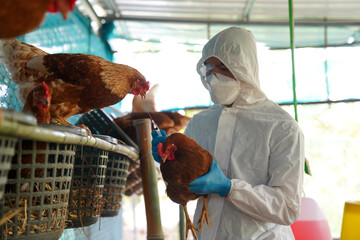The Centers for Disease Control and Prevention is warning that the bird flu that infected a Texan has mutated to spread more easily. But all of the “authorities” still claim that the risk to humans is low.
The CDC said tests on the H5N1 sample showed it had a mutation that was “known to be associated with viral adaptation to mammalian hosts” but insisted the mutations were minor and the overall risk to the public was still low. According to a report by MSN, this mutation was not detected in cattle or in wild birds, with officials saying it “may have been acquired in the patient during the development of the [eye infection]”.
According to a report by NBC News, the Texas dairy worker who caught bird flu from a sick cow in late March had none of the symptoms typically associated with influenza, including fever, coughing, or sneezing. The only indication that he had been infected was a striking case of pinkeye.
Details about this bird flu infection were published Friday in the New England Journal of Medicine, from health officials in Texas and the Centers for Disease Control and Prevention.
One Person In Texas Has Been Infected With Bird Flu After Handling Cattle
Bird flu was first detected in several herds of dairy cows in late March. Around that same time, the man’s right eye started to bother him and became red. He ended up with broken blood vessels in both eyes. Doctors said he had conjunctivitis or pinkeye. The man had been in direct contact with both healthy and sick cows. His pinkeye condition was apparently caused by the bird flu virus.
The infected man was given the antiviral Tamiflu and was told to isolate as he recovered. No one he lives with became sick, though they, too, were given the antiviral to reduce that risk, the authors of the published report wrote. He never developed respiratory symptoms, which suggests that the virus may not spread easily from person to person through coughs or sneezes.
Yet.
The mainstream media has been reporting that this is likely the first time bird flu has spread to a human from a different mammal species.
According to Stat News, nearly 900 people in 23 countries have been infected with the H5N1 bird flu virus since it started spreading from Southeast Asia in late 2003. But previous human cases were all linked to transmission from infected birds, typically domestic poultry.
Read the full article here













